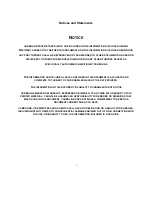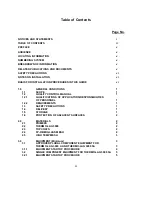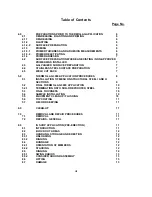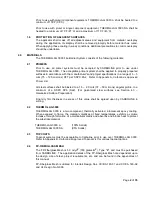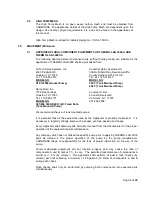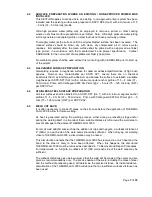
Page
9
of
35
7 Days or beyond
The surface of the THERMO-LAG 3000 must be "Sweep Blasted" or mechanically abraded
to remove any contamination or particulate. The freshly blasted surface must then be
solvent wiped (Toluene or Thinner 19) to reactivate the THERMO-LAG 3000 and to remove
contaminants.
THERMO-LAG 3000 must be protected from direct rain until it has reached sufficient cure. If
water contamination occurs to uncured THERMO-LAG 3000, any uncured material must be
removed and reapplied. The material must be clean and dry prior to applying subsequent
coats of THERMO-LAG 3000 or topcoating.
Topcoating shall be applied in accordance with the project specification and manufacturer's
recommendations. The maximum allowable time to topcoat the THERMO-LAG 3000 is 7
days at 70˚F (21˚C). If this time is exceeded, the area should be sweep blasted or
mechanically abraded with 40 grit paper (or approved equal), then solvent wiped, prior to
topcoating. A topcoat is always required. The minimum topcoating time for THERMO-LAG
3000 A is 10 hours, and for THERMO-LAG 3000 SA is 48 hours.
The Applicator shall take frequent thickness measurements during application, using a
penetrating measuring device to ensure that the coating is uniformly applied at the required
film thickness. The thickness checks shall be made as required by the project based on
AWCI Technical Manual 12-B.
Care shall be taken to keep the fan pattern at an angle of 90 degrees to the surface and at
12" (305mm) to 18" (457mm) away from the surface.
A brush and/or roller can be used to
improve the surface quality. Please read the THERMO-LAG 3000 product data sheet before
application commences.
Excessive build-up of THERMO-LAG 3000 in angle areas can be removed or leveled by
rolling the surface with a solvent resistant foam or short napped mohair roller. Use Toluene
or Plasite Thinner #19 to keep roller moist which will prevent roller from sticking to the
material. CARBOLINE recommends the use of solvent resistant spray bottles to minimize
the use of solvents.
Do not use excessive solvent during rolling, as this will retard the surface cure of the
material.
Special care should be taken when spraying flange edges on structural steel members to
ensure complete coverage and a consistent thickness. The normal spray pattern on the
outside and the inside surfaces of the flanges should cause the material to flow and wrap
around the edge of the flange. If the coating on the flange edge is uneven after application,
the edge shall be rolled lightly in order to provide an even surface.
5.1
INSTALLATION OF MESH ON STRUCTURAL STEEL I & H SECTIONS
After the first coat of THERMO-LAG 3000 has been applied, the mesh is placed in position
as detailed in certification or approval documentation. See Appendix C.
Ensure that the
proper mesh reinforcement is utilized based on the project specific UL or Intertek Design i.e.
Design No. UL N608 (Restrained/Unrestrained Beams): FP-Fiberglass Mesh
Design No. CC/BA 180-01 (Restrained/Unrestrained Beams): FP-Fiberglass Mesh
Design No. CC/CA 180-02 (Wide Flange Columns): FP-Fiberglass Mesh
Design No. CC/CA 180-03 (Tubular Columns): High Temp Mesh
Wide Flange Section
The mesh shall be overlapped 1” (25mm) on all longitudinal seams running down the wide
flange member.
Содержание Thermo-Lag 3000
Страница 21: ...Page 14 of 35 APPENDIX A THERMO LAG 3000 ACCEPTABLE PRIMER LIST...
Страница 23: ...Page 16 of 35 APPENDIX B THERMO LAG 3000 ACCEPTABLE TOPCOAT LIST...
Страница 25: ...Page 18 of 35 APPENDIX C THERMO LAG 3000 ASTM E119 DESIGNS...
Страница 38: ...Page 31 of 35 APPENDIX D THERMO LAG 3000 TYPICAL APPLICATION LOGS...
Страница 40: ...Page 33 of 35...
Страница 41: ...Page 34 of 35...
Страница 42: ...Page 35 of 35...

